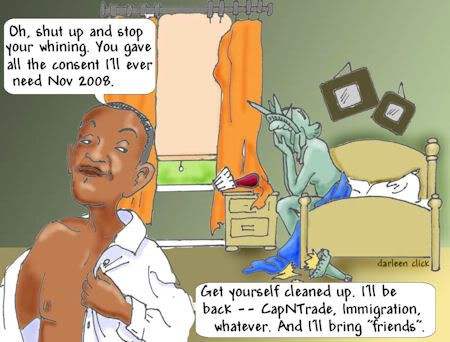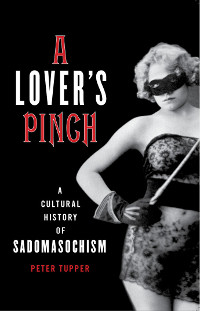[x-posted from my personal blog with edits]
Even though my fatigue level started collapsing in mid-afternoon, I had an incredible time at day one of Leather Leadership. I got to meet both MayMay, founder of the KinkForAll conference, and Graydancer, of the long-running Ropecast. He actually recognized my name from my attendee badge and remembered that he had called my “Innocent’s Progress” story great erotica. I think we talked briefly about doing an interview, which would be great for promoting the Innocent’s Progress book when it drops this summer. It was a bit odd hearing the person in front of me speaking in the same voice that was so familiar from my MP3 player’s headphones.
Andrea Zanin, aka Sex Geek, gave a great momentum speech, asking whether BDSM has lived up to its revolutionary potential. She actually cited the Against Sadomasochism essay anthology published
I also got to meet Mollena Williams, aka the Perverted Negress, at her discussion on being “a minority in a minority,” She talked about her own history, and the difference between “slave auction” and “scene auction.” Williams has a way of dropping the words “shit”, as an all-purpose noun, and “fucken”, as an all-purpose adjective, into her conversation so that they don’t sound crude.
AC and I both began to fade out later on, and we went back to her ex’s place for dinner and rest. There wasn’t an official play party at LLC, but con attendees got reduced admission to the Space, a privately-operated party held at a community hall in Detroit. AC’s ex was kind enough to introduce me to MS so I’d have a date. The Space lays out a nice dinner buffet and some interesting furniture.
I’ve been enjoying the kindness of relative strangers all through this junket. Places to stay in both Detroit at Seattle, a scholarship to cover admission, a drive down to Seattle, an awesome hospitality suite at the conference, a free copy of a book, and a plane fare covered by my organization. Heck, a guy from the conference even gave me an extra meal voucher last night at the airport. This is what community means, folks. I’ve made this trip only because of the generosity of others.
It’s revitalized my connection to the community and my interest in my BDSM history book project, both presenting and even actually writing the damned thing. Thanks to still more free advice, I’m thinking that self-publishing is the way to go.
While I’m 90% decided against running for re-election in the fall (I’ve been on the board for 3 years, I’ve got my purple hearts, I need a break), I do still want to be involved. Just somewhere removed a step or two from the politics. Maybe run the web site or newsletter.
Sunday’s presentations continued to be good. I saw Lee Harrington on presenting and on TNG (The Next Generation) groups within the community. Lee started off giving reasons for TNG and other age-based groups or sub groups, but as the discussion wore on I kept hearing reasons that they weren’t much good. A 25 year old who has been in the Scene since he or she was 20 has more experience (and hopefully more wisdom) than somebody in their 40s who just tiptoed into their first munch. And predators aren’t necessarily older guys leching after young sub women. If age is no indicator of experience, good judgment, and whether or not a person is a danger, I wondered, what are age-based groups for, other than hanging out with people who get the same movie references? The best way to handle age-based groups is treat them as peripheral, entry-ways to the larger community. Anything that can make that first step into the community a little less scary is good.
I heard some interesting talk on the role of leaders in policing the community. One guy made a very bold statement that the gay community had failed to educate the new generation of gay men about HIV: “Every new guy I meet is already positive.” That got me thinking about the horror stories that circulate at these kind of gatherings, some verifiably true, some only urban legends (I hope). Have we as kinky leaders failed to get the SSC/RACK gospel out and/or failed to enforce an acceptable standard of behavior? Or is there a limit to what we can do? We can control what happens in parties, but not people’s bedrooms.
And it isn’t even the problem of education. Allena, who runs the Center for Sex Positive Culture in Seattle, and I were talking about people we know or have heard in the scene doing things that range from stupidly incompetent to outright criminal. These are not always the lone man or woman who calls himself a kinkster when he or she’s just abusive, or even the sketchy person who hangs out on the periphery of the community. These are sometimes leaders and educators, people who are supposed to exemplify BDSM, including the ethical underpinnings of the culture/lifestyle/community/sexuality. They don’t even have ignorance as a defense.
Right now, I’m writing this from inside the library at Seattle’s Center for Sex Positive Culture. Give me a hot plate and a sleeping bag and I’d gladly live here.

(1934), including scans of some of the art.



